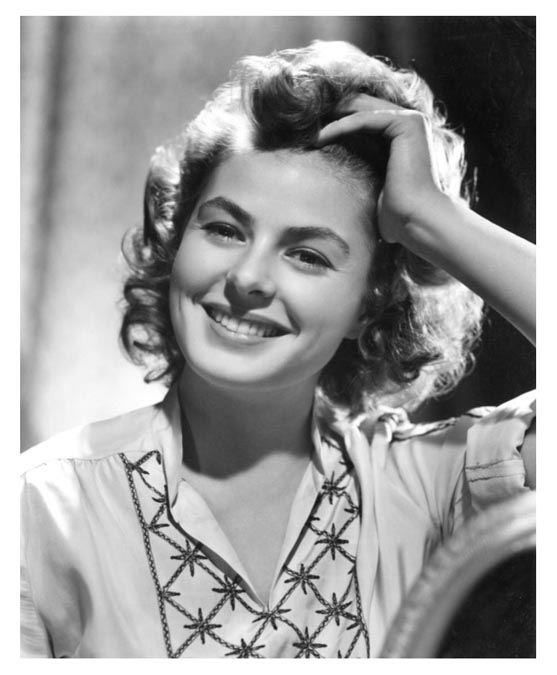
Ingrid Bergman delivered her audition pieces to the Royal Dramatic Theatre.
The year was 1933.

One of her choices was a Hungarian play about a peasant girl who flirts with a bold country boy. She jumps out of the wings on to the stage and stands there, hands on hips, as if to say, “Here I am. Look at me. Are you paying attention?”
She lacked security. She was terribly shy. She was frightened of people. And in her own words, she had been “the thinnest child ever.”
She then received the white envelope signifying acceptance. The judges said that she had stage presence. She had charisma. She had the high cheekbones of her Swedish-German ancestors.
She was magic on stage.
The actress the world would come to know was born August 29, 1915 in Stockholm, Sweden. She was named after Princess Ingrid of Sweden. She would spend her Summers in Germany and spoke fluent German. She grew up an only child and lost both her mother and father to death at young ages. Then she was sent to live with aunts and uncles.
She would later write that “Drama School was marvelous. I was so happy. I became a terribly happy person because I was doing exactly what I wanted to do. We had ballet lessons, fencing lessons, history of the theatre, voice projection, posture, and we played scenes.”
Ingrid is often regarded as one of the most influential screen figures in cinematic history. She won three Academy Awards, two Primetime Emmy Awards, a Tony Award, four Golden Globe Awards, BAFTA Award, and a Volpi Cup. In 1999 the American Film Institute recognized Bergman as the fourth greatest female screen legend of Classic Hollywood Cinema.
One of her greatest roles was of Ilsa Lund in Casabanca in 1942. Her luminous beauty owned the movie. Watch closely her face as every emotion is shown in a subtle way. A flicker of her eyes, a nod of her head, a way that she walks, her determination. All of it shows on her beautiful face. Along with “Babette’s Feast,” it is my favorite movie.
Bergman’s first film was as an extra in the 1932 film, Landskampan experience she described as “walking on holy ground.” Her first speaking role was small part in Munkbrogrevenin 1934.
Bergman was married three times and bore four children. She noted in her autobiography that she had more than a dozen lovers. She became friends with many men who would adore her from afar. She said, “l knew from the beginning that I wanted to be an actress.” Sometimes she was wearing her deceased mother’s clothing and staging plays in her father’s photography studio. She spoke four languages, including her native Swedish, Italian, German, and English.
Ingrid Bergman died of breast cancer at the age of 67 August 29, 1982 in London. She was cremated and her ashes were taken to Norra, Begravningsplatsen, Stockholm.
What gifts on film she left us. Intermezzo (1939), For Whom the Bells Tolls (1943) Gaslight (1944), and The Bells of St. Mary’s (1945). And Notorious, Murder on the Orient Express, Autumn Sonata, and Cactus Flower, to name some of her most recognized films.

